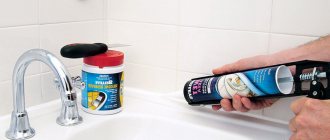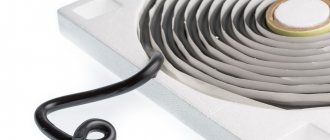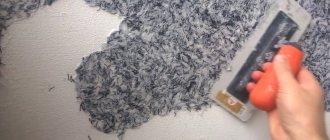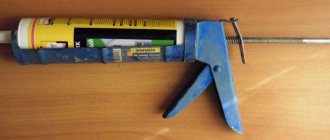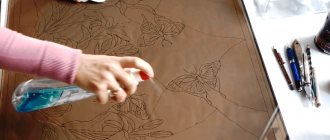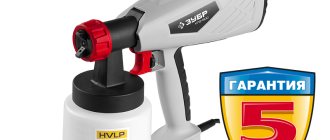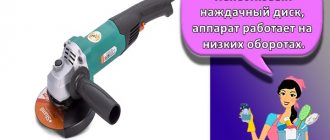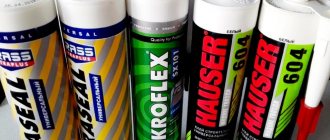What are liquid nails? What can you glue with them? Are these mixtures really capable of replacing conventional metal fasteners - “nails” and how to use them correctly? In this article you can find out the manufacturers' recommendations and other facts about this product, which is produced in a special package - a tube.
In 1968 American has released a new unique product - a universal construction adhesive mixture “Liquid Nails” (translated as “liquid nails”). For over 50 years, this building mixture has been in high demand in all countries of the world, fully justifying its name. Its practical application has confirmed the possibility of providing a high-quality connection of various materials, comparable in strength to mechanical strength.
ON A NOTE! At the moment, numerous modifications of this product are being produced, represented by other brands. Each of them has its own individual characteristics, which are important to consider when using. A detailed study of the instructions will help you understand all the nuances of how to use liquid nails.
Types of assembly adhesive
Before using the viscous mass, it must be said that today there are two main types produced: water-based and organic solvent. Its fixing properties, strength index and resistance to external factors depend on the chemical components.
With organic solvent
The main active component of the adhesive with an organic solvent was neoprene - chloroprene rubber. A mixture of this composition is excellent for joining glass and ceramic surfaces, as well as plastic.
Advantages:
- Ensuring increased strength of connections.
- Quick fixation.
- Preservation of properties under conditions of temperature changes down to -40 °C.
Flaws:
- Strong specific smell.
- Flammability in the liquid state does not allow the mixture to be used near fire sources.
- The toxicity of the components requires the use of the product in well-ventilated areas using gloves, respirators and other personal protective equipment.
With aqueous solvent
The main active components of water-based adhesives are acrylic paints, polyurethane and PVC.
Types of sealants for construction work
The first and one of the most popular types is acrylic material. It consists of special acrylic resins. At the moment of completion of hardening, it acquires low elasticity. It also has increased adhesive properties with building materials that have high porosity. Therefore, it is most often used to work with the following materials:
- with concrete;
- with brick;
- with solid wood.
Also among the distinctive features is the ability to be used only for interior work. This is due to the fact that acrylic sealant is not able to withstand sub-zero temperatures. The maximum value at which the sealant feels good is at -20 degrees.
Due to some differences in characteristics, acrylic sealant is used to quickly seal doorways and window frames. They can also be painted with acrylic paints. There are waterproof and non-waterproof. The latter are completely environmentally safe. But they are not suitable for finishing a bathroom.
In addition to acrylic, the following types of sealant :
- silicone-based composition;
The main component, as the name suggests, is 45% silicone. They are distinguished by high elasticity even at the moment of hardening. Interacts well with almost all materials, including ceramics, glass, aluminum.
Among the technical properties, it is worth noting enhanced resistance to water. Therefore, it is actively used for arranging bathrooms and other objects with high levels of humidity. Silicone compounds have their own subtypes:
- general purpose materials – structure of over 45% silicone rubber and 45% hydrophobic filler;
- sanitary silicone sealant - the composition of this material includes additional antifungal additives. Due to the latter, the material is protected from mold. It is this type that is most widely used for arranging structures with high humidity;
- special sealant for water containers - aquariums.
Sealant for treating window frames - has additives that increase resistance to UV radiation. This type is resistant to the formation of fungus and mold.
- compositions based on polyurethane;
Such materials are characterized by increased strength and enhanced elastic properties. Due to this, the compositions are widely used in external construction work.
But there is one important drawback - high toxicity before polymerization. This disadvantage makes them extremely unsafe for interior work. Therefore, they must be used for external processing.
Note : When working with polyurethane sealant, you must use personal protective equipment.
- bituminous compounds and sealants for processing threaded connections;
The former are widely used in external construction work for roofing. They are characterized by increased adhesive properties, resistance to moisture and other external influences. They need to be applied only at positive temperatures, but after drying they interact well with negative temperatures down to -50 degrees.
Sealants used for processing threaded connections are highly targeted. It is used only for working with threaded connections.
There are also combined types of material. But they are distinguished by their high cost, due to which they are not in wide demand.
Pros and cons of the substance
Compared with other adhesive compositions widely used in installation, repair and various construction works, the substance is characterized by a number of advantages.
These include:
- increased degree of adhesion – several tens of times more reliable than analogues;
- versatility – can be used with almost all building materials;
- the ability to reliably connect surfaces of various structures: rough, glossy, etc.;
- quick clutch;
- sharing the substance with metal hardware;
- maintaining increased elasticity after drying;
- heat resistance (for organic-based glue);
- health safety (for water-based adhesive mixtures).
Main disadvantages:
- temperature barrier 0 °C (for water-based adhesive mixtures);
- toxicity, sharp specific odor (for organic-based adhesives).
HELPFUL ADVICE! To avoid problems during repair work, it is necessary to carefully familiarize yourself with the recommendations for the use of a specific type of solution, storage and application conditions. It is not recommended to store the cylinder in direct sunlight or in the cold. Storing the tube in a humid environment may cause the mixture to separate. The term of use is 1 year.
How to use the device
Before using liquid nails, you must carefully read the instructions on the body or packaging. To work with liquid nails you will need a special base, which is also called a gun. It is not always at hand, but installation work can be easily carried out.
Gun for liquid nails Source ad-cd.net
Next, we'll look at several ways to use liquid glue.
Use with a pistol
When you have a liquid nail gun available, this greatly simplifies the task. It is not difficult to use, and it takes much less time to glue. Before gluing with liquid nails, the gun must be primed.
To fill the gun, do the following:
- press the locking lever, which is located on the body of the gun, and then move the special rod back, otherwise it is called a fixed cartridge;
- insert the tube into the gun itself and secure it with the cartridge;
- the dispenser through which the glue will come out should be placed in the neck, having previously cut the bottom of the tube at an oblique angle;
- press the trigger several times until the glue is pumped through the dispenser and appears at the tip.
How to use liquid nails?
Application requires compliance with several important conditions. So, it is important to consider that water-based products are used at temperatures above 5 °C. When working with neoprene adhesives, it is necessary to ensure good ventilation of the room, use a mask and thick rubber gloves.
The surfaces to be bonded must be as dry and clean as possible. Glossy surfaces require preliminary degreasing, and porous surfaces need to be stripped of previous coatings (remnants of wallpaper, paint and primer). We recommend that you read the reviews: is it possible to degrease with white spirit and how long does it take for the primer to dry? Before using a fresh concrete surface as a base for gluing, you need to wait until it shrinks and dries.
Instructions for use
The main stages of fixing materials of various structures:
- Depressurize the tube - pierce it with a sharp metal object or make an incision on the plastic protrusion. Fix the plastic nozzle, cut off its end and seal with a cap until immediate use.
- When working, remove the cap and apply glue evenly to the back side of the part. To fix light elements, it is enough to put separate points; for long objects, a strip is applied, and for heavy ones, you will have to apply a mesh or snake.
- Press the part firmly onto the surface, locking it in the correct position. Hold with your hands for several minutes, applying slight pressure.
- Do not touch the surface until the glue has set. Primary adhesion takes up to 3 days, and complete polymerization occurs after a week. The speed of fixing parts depends on the temperature and humidity of the environment, as well as on the thickness of the layer. High humidity and low temperatures inhibit the hardening of the glue.
A different approach is used for gluing heavy materials (stone, bamboo wallpaper).
Types of liquid nails
Liquid nails also have their own classification. They differ in material and installation method. Some nails are not compatible with certain surfaces. There are only two types, which are similar to adhesive compositions. Let's look at each type and identify its distinctive features.
Neoprene liquid nails
Liquid nails for metal work very well. The composition is based on synthetic rubber, which is called neoprene, hence the name of the type itself. This composition resists moisture well. It is very durable and can withstand the heaviest metal structures. Can be used for the following purposes:
- gluing various parts under conditions of high humidity;
- external installation work;
- installation of parts in severe frost.
However, the composition of such liquid nails releases very toxic substances that can harm a person’s lungs. Therefore, it is important to protect your respiratory system before working with this material. The composition is not suitable for gluing plastic parts.
Neoprite liquid nails Source samodelino.ru
See also: Catalog of companies that specialize in finishing materials and related work
Water based acrylic liquid nails
The base is polyurethane, polyvinyl acetate and mineral components. These liquid nails are not suitable for repair work in harsh weather conditions. Do not glue parts in high humidity or at very low temperatures. Mainly used for gluing rough and porous surfaces, as they can easily grab parts.
Water-based acrylic liquid nails Source stpulscen.ru
Not suitable for working with polyethylene and Teflon. However, working with acrylic liquid nails is much easier because they do not emit toxic substances that could harm the body. The smell disappears almost immediately, and the composition itself is even considered environmentally friendly.
How to wipe off liquid nails?
Depending on how long ago it was applied and the type of surface, excess glue is removed in various ways.
How to remove the substance:
- uncured excess can be removed with a dry rag or knife;
- excess recently used glue is wiped off with a damp sponge.
It is much more difficult to get rid of frozen excess using:
- special cleaner;
- blade, scraper (on durable surfaces);
- by temperature influence, heating the adhesive residues to 70 °C with a hairdryer and cleaning them off with a scraper;
- on street structures, excess can be softened by sunlight and washed off with water;
- small fragments can be cleaned of excess by placing them in the freezer; the cracked product can be easily scraped off.
The substance is a universal construction adhesive for reliable fixation of surfaces made of various materials. Simplicity and efficiency of use makes it an indispensable tool for the home craftsman.
Which composition is better to choose?
When choosing the optimal option, it is necessary, first of all, to take into account the purpose of application. In particular, Henkel “Moment Installation” products have several varieties used for different types of work.
Basic recommendations when choosing:
- For facing work that involves fixing heavy materials (stone, siding, wooden panels, etc.), it is recommended to use high-strength “Heavy Duty”, “Especially strong installation moment”, “LN 901”, “Max Tack Sika”, “Zigger 99” and etc.
- Water-based solutions, for example, “Moment Installation Super-Strong”, are optimal for working with foamed materials (for example, polystyrene foam).
Purpose of liquid nails
This material is also divided according to its purpose. The most famous and specialized compositions of liquid nails are represented by brands such as “Moment Montazh” and “Makroflex”. It is worth carefully reading the instructions for each composition to understand whether liquid glue is suitable for the planned repair work.
The purpose of the compositions is divided as follows:
- For glass. Use for gluing parts to glass and mirror surfaces. Compositions LN-930 and “Zigger 93” are excellent, since after them there will be no traces of glue left on the glass or mirror.
- For gluing in conditions of high moisture. Suitable for gluing materials in baths, swimming pools, bathtubs, etc. It is best to use "Nail Power" and "Tub Surround".
Bonding tiles Source svpmos.ru
